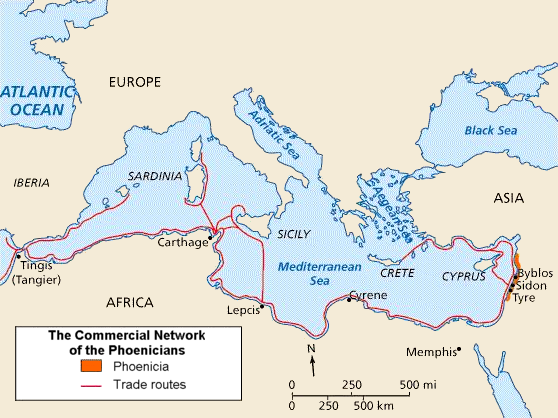Due to its secluded location, the palace survived the destruction of two World Wars. Until 1944, it served as a depot for Nazi plunder that was taken from France by the Reichsleiter Rosenberg Institute for the Occupied Territories (Einsatzstab Reichsleiter Rosenberg für die besetzten Gebiete), a suborganization of the Nazi Party.The castle was used to catalogue the works of arts. (After World War II 39 photo albums were found in the palace documenting the scale of the art seizures. The albums are now stored in the United States National Archives.) oops didn't gave it back
when the nazis did it t'was bad but not the next, and take those scientists too
- wait, that name
The Reichsleiter Rosenberg Taskforce (German: Einsatzstab Reichsleiter Rosenberg or ERR) was a Nazi Party organization dedicated to appropriating cultural property during the Second World War. It was led by the chief ideologue of the Nazi Party, Alfred Rosenberg, from within the NSDAP Office of Foreign Affairs (Außenpolitischen Amt der NSDAP or APA). Between 1940 and 1945, the ERR operated in France, the Benelux countries, Poland, the Baltic States, Greece, Italy and on the territory of the Soviet Union in the Reichskommissariat Ostland and Reichskommissariat Ukraine. Much of the looted material was recovered by the Allies after the war, and returned to rightful owners, but there remains a substantial part that has been lost or remains with the Allied powers.
-- this gets muddier, for the neo-pagan writer
In 1929 Rosenberg founded the Militant League for German Culture. He later formed the "Institute for the Study of the Jewish Question," dedicated to identifying and attacking Jewish influence in German culture and to recording the history of Judaism from a radical nationalist perspective. He became a Reichstag Deputy in 1930 and published his book on racial theory The Myth of the Twentieth Century (Der Mythus des 20. Jahrhunderts) which deals with key issues in the National Socialist ideology, such as the "Jewish question." Rosenberg intended his book as a sequel to Houston Stewart Chamberlain's above-cited book. Despite selling more than a million copies by 1945, its influence within Nazism remains doubtful. It is often said to have been a book that was officially venerated within Nazism, but one that few had actually read beyond the first chapter or even found comprehensible. Hitler called it "stuff nobody can understand" and disapproved of its pseudo-religious tone.
Rosenberg had also been a member of the Thule Society, along with Eckart, As the Nazi Party's chief racial theorist, Rosenberg oversaw the construction of a human racial "ladder" that justified Hitler's racial and ethnic policies. Rosenberg built on the works of Arthur de Gobineau, Houston Stewart Chamberlain, Madison Grant, the Klansman Lothrop Stoddard as well as on the beliefs of Hitler. Rosenberg placed Blacks and Jews at the very bottom of the ladder, while at the very top stood the white "Aryan" race. Rosenberg promoted the Nordic theory which regarded Nordics as the "master race", superior to all others, including to other Aryans (Indo-Europeans). He was also influenced by the Judeo-Masonic conspiracy theory promoted by the Catholic counter-revolutionary tradition, such as the book Le Juif, le judaïsme et la judaïsation des peuples chrétiens (1869) by Roger Gougenot des Mousseaux, which he translated into German under the title The Eternal Jew.
--- and the eternal meta-mystic Eckart.?
Rosenberg got the racial term Untermensch from the title of Stoddard's 1922 book The Revolt Against Civilization: The Menace of the Under-man, which had been adopted by the Nazis from that book's German version Der Kulturumsturz: Die Drohung des Untermenschen (1925).
Rosenberg reshaped Nazi racial policy over the years, but it always consisted of Aryan supremacy, extreme German nationalism and rabid antisemitism. Rosenberg also outspokenly opposed homosexuality – notably in his pamphlet "Der Sumpf" ("The Swamp", 1927). He viewed homosexuality as a hindrance to the expansion of the Nordic population.
Though Rosenberg does not use the word "master race". He uses the word "Herrenvolk" (i.e. ruling people) twice in his book The Myth, first referring to the Amorites (saying that Sayce described them as fair skinned and blue eyed) and secondly quoting Victor Wallace Germains' description of the English in "The Truth about Kitchener". ("The Myth of the Twentieth Century")
http://avalon.law.yale.edu/imt/judrosen.asp
the more you look the more [british] you find
some persian style ?
how i like internet, with its obscurantist propaganda,
i like the games promoting mythical slavery thinking,
ubiquious is recommanding american science-fantasy-topia,
i like american standardizing over everything,
first they went for showing off their vanity-crosses now they go showing off vanity-crotches
the lies that live rentfree in your heads, keep up the spirit
&
prendre des vessies pour des lanternes, see the swamps for golan-heights /golum heights ?
men of clay and the genie energy (wiki that) for the 1%
any talos for tales
there's more dots than one can connect, comically, they align thmselves
from giddeon wars to the unicorn annunciation, a small step for man
santa barbara outside / the meaning of the tower i assume is other-ish
this "unicorn annunciation" from "Hunt of the Unicorn Annunciation"
another santa barbara , "what happened"- mystification
The Virgin Mary as hortus conclusus
not unlike...plato's cave (vessel) or the womb (grail)
https://en.wikipedia.org/wiki/Hortus_conclusus
wiki's more sjw everytime, try shift that out
when insistance is on Netherlandish were dutch is the word
i'll throw a Beeldenstorm card fwiw
https://en.wikipedia.org/wiki/Beeldenstorm
sjw's like martyrs for religions too,
scapegoat memetics is how rulers rule,
with the law of scapegoat memetics,
until the heaps of ruins
circusses
nobility vs commoner?
the sword against the beast or
the academic class against the working class
destroying the pillars of the dual principal
furthering obscurantism was aimedidentity politic for transhumanism
come on in, the water's lovely















